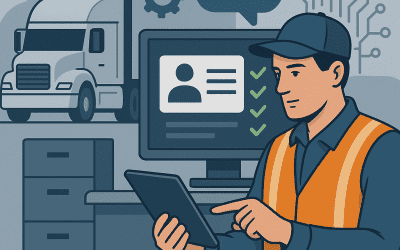The trucking and transportation industry is set for significant growth in 2025, marking a pivotal moment in the trucking industry economic recovery 2025. This rebound is fueled by market resilience, government policies, and advanced technologies. With a new administration prioritizing infrastructure investments, sustainability, and supply chain improvements, freight demand is expected to surge, creating both opportunities and challenges for trucking companies.
Key Trends Shaping the Industry’s Recovery
1. E-commerce Growth
The e-commerce boom continues to drive demand for freight and last-mile delivery. Online shopping habits, established during the pandemic, remain strong and reshape freight patterns.
2. Supply Chain Challenges
Labor shortages and global shipping delays have underscored the need for adaptable logistics. Companies are now investing in solutions to build more resilient supply chains.
3. Driver Shortages
The trucking industry faces an ongoing driver shortage. Retirements, regulations, and a lack of new drivers entering the field make recruitment and retention top priorities.
4. Economic Fluctuations
Fuel prices, consumer demand, and trade policies have historically impacted trucking operations. Companies have adapted to these changes, paving the way for innovation and growth.
2025 Projections: Growth and Innovation
The trucking industry’s recovery in 2025 will be driven by several factors:
Infrastructure Investments
Federal initiatives aim to improve transportation networks, reducing congestion and cutting operational costs. These upgrades will boost supply chain efficiency across the board.
Policy Changes Supporting Growth
New policies promoting manufacturing and domestic production will increase freight volumes. Sustainability incentives will also encourage fleets to adopt greener technologies.
Rising Freight Demand
Economic growth will fuel demand for freight, particularly in construction, retail, and agriculture. Trucking companies must prepare for higher volumes.
Technology Adoption
Digital tools like telematics, fleet management software, and compliance solutions will play a critical role. These technologies will help fleets scale operations, improve safety, and optimize productivity.
Meeting the Demand for Drivers
The economic recovery will intensify the demand for qualified DOT drivers. This makes efficient recruitment and compliance crucial. To meet these needs, fleets require tools that simplify hiring and ensure FMCSA compliance.
This is where DQM Connect becomes an essential solution.
How DQM Connect Powers Growth
Streamlined Driver Onboarding
DQM Connect simplifies DOT-compliant onboarding, helping fleets quickly meet rising driver demands. Its intuitive platform ensures accurate and efficient processing.
Compliance Made Easy
As regulations evolve, DQM Connect keeps fleets compliant with FMCSA standards. Automated alerts and workflows minimize risks and streamline administrative tasks.
Boosting Driver Retention
Retention is as important as recruitment. DQM Connect helps fleets maintain up-to-date records, creating a hassle-free experience for drivers and reducing turnover.
Scalable Solutions for Growing Fleets
DQM Connect adapts to fleet size, making it easy to manage compliance, safety, and growth without added complexity.
Trucking Industry Economic Recovery 2025: A Bright Outlook
The trucking industry is entering an exciting period of recovery and innovation. With increasing freight demand, changing regulations, and advancing technologies, fleets must be ready to adapt.
DQM Connect provides the tools needed to thrive in this evolving landscape. From compliance to driver management, it empowers fleets to seize opportunities and overcome challenges.
Prepare your fleet for success in 2025. Contact us today to discover how DQM Connect can drive your growth during this economic recovery.




